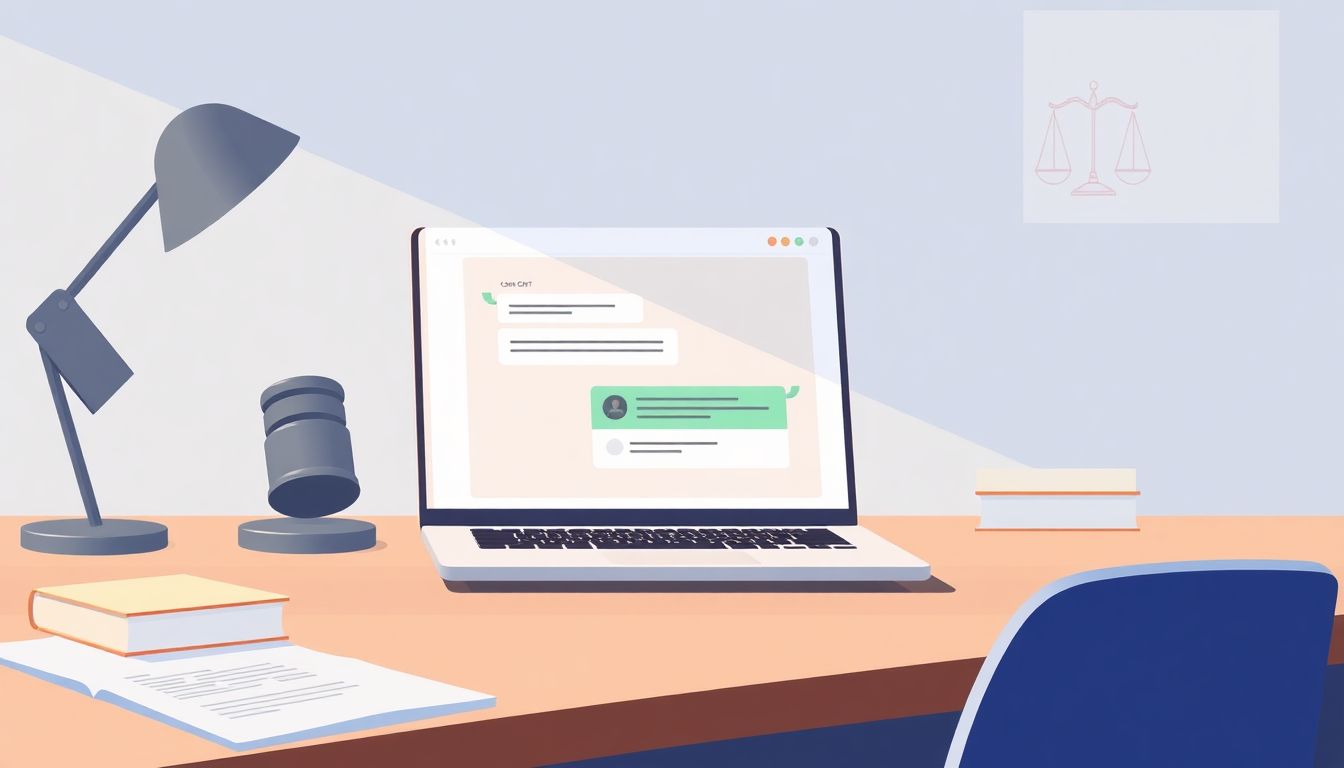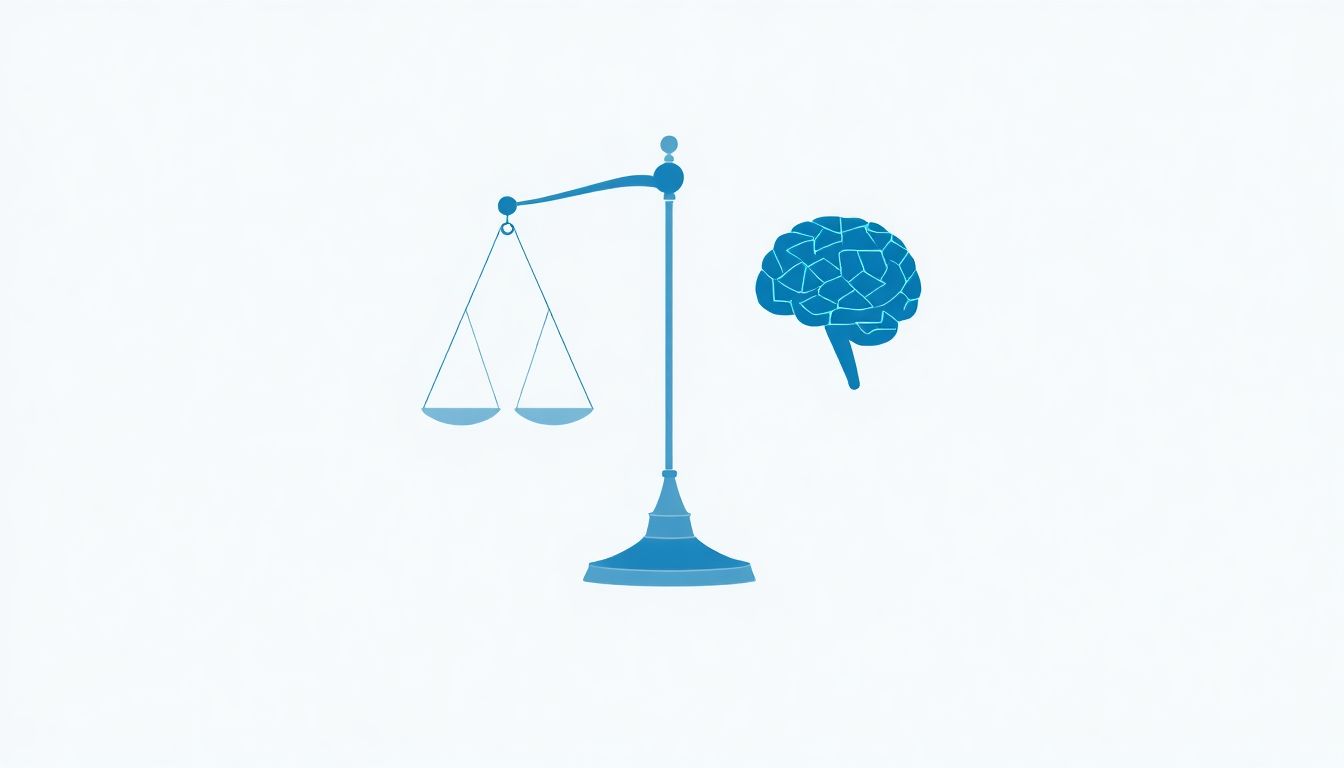You might be wondering how technology can really shake things up in the legal world. After all, law seems like a field that thrives on tradition and deep-rooted processes. But here’s the kicker: innovations like ChatGPT are not just on the sidelines; they’re stepping onto the main stage, and it’s time for legal professionals to pay attention.
Stick around, and we’ll explore how ChatGPT can streamline your workflows, enhance client communication, and even help you draft documents faster than you say “objection!” From practical prompts to real-life success stories, you’ll find solutions that could transform your practice without breaking a sweat.
We’ll also dig into the ethical considerations and future challenges ahead, so you can navigate this new terrain with confidence. Ready to dive in? Let’s get started!
Key Takeaways
- ChatGPT is transforming legal services by automating tasks like documentation and enhancing legal research.
- Using ChatGPT saves time and reduces costs, allowing lawyers to focus on more complex legal issues.
- Effective prompts can help lawyers streamline their workflows and improve client interactions.
- Real-world examples show that ChatGPT can significantly speed up processes, such as contract drafting.
- Ethical considerations include maintaining client confidentiality and addressing AI bias.
- Challenges like resistance to change and data privacy concerns must be proactively managed for successful integration.
- The future of AI in law holds promise for improved accuracy and innovative solutions, reshaping the legal landscape.
- To implement ChatGPT, firms should assess their needs, provide training, and maintain open client communication.

How ChatGPT is Changing Legal Services
ChatGPT is fundamentally altering the landscape of legal services by leveraging artificial intelligence to provide efficient solutions.
Many law firms are starting to harness ChatGPT to enhance legal research, automate documentation, and improve client interactions.
This technology enables lawyers to access a wealth of information quickly, allowing them to focus more on strategy and client relationships.
Moreover, AI in law helps streamline workflows, reducing the time required for mundane tasks.
As a result, the impact of ChatGPT can be seen in areas such as case preparation, contract drafting, and even directly answering client queries.
This transformation signifies not just a shift in tools but a major change in how legal professionals approach their work.
The Benefits of Using ChatGPT in Legal Practice
The use of ChatGPT in legal practice comes with numerous benefits that can enhance overall efficiency.
Firstly, it saves time—legal professionals can automate the document review process and quickly generate drafts, allowing them to allocate more time to complex case work.
This efficiency also translates into cost savings, which can be a significant advantage for both law firms and clients.
Moreover, integrating AI into client communication channels improves engagement by providing instant responses to common legal inquiries.
Lawyers can utilize ChatGPT to streamline legal workflows, ensuring that routine tasks are handled smoothly and effectively.
Overall, the time-saving benefits of ChatGPT contribute to higher productivity, enabling legal teams to focus on the nuances of the law.
Common ChatGPT Prompts for Legal Professionals
To make the most out of ChatGPT, legal professionals can use various prompts tailored to their needs.
Here are some effective prompts you can copy and paste:
- “Draft a non-disclosure agreement template for my client who is negotiating a business partnership.”
- “Summarize the key points of the [specific legal case or law].”
- “Generate a list of potential legal issues for small businesses considering e-commerce.”
- “Analyze this case and provide a brief overview of possible defenses based on the given facts.”
- “Provide a checklist for compliance requirements in [specific jurisdiction] related to data privacy.”
- “Explain the implications of [specific legal concept] in layman’s terms for my client.”
- “Create a list of questions to ask during a client intake interview regarding a family law case.”
Using these prompts will help you interact more effectively with ChatGPT and address specific legal inquiries efficiently.
Real-World Examples of ChatGPT in Law
Various law firms have already started implementing ChatGPT, yielding impressive results.
For instance, a mid-sized law firm utilized ChatGPT to automate the contract drafting process, leading to a 40% reduction in turnaround time for client contracts.
Another example involves a legal consulting practice that employed AI to conduct initial case assessments, dramatically improving response rates to client inquiries.
Moreover, large firms have adopted ChatGPT to break down complex legal concepts into more digestible formats for clients, enhancing their overall experience.
These practical implementations showcase how ChatGPT is not merely a theoretical tool but a transformative technology actively reshaping legal services.

Ethical Considerations When Using ChatGPT in Law
When leveraging ChatGPT in legal practice, it’s essential to address ethical considerations to ensure responsible usage.
One major concern is client confidentiality; lawyers must ensure that sensitive information is never shared with AI tools.
Also, consider the implications of AI bias, as reliance on AI outputs without critical analysis may lead to misguided advice or interpretations.
It’s crucial to maintain transparency with clients about how AI tools aid in their cases, so they understand the role of technology in their legal representation.
Additionally, compliance with local regulations is necessary as most jurisdictions have specific rules governing legal practice and data protection.
Establish a clear framework for responsible AI use within your firm to guide legal professionals on ethical interactions with ChatGPT.
Remember, while AI can enhance efficiency, it should always complement, not replace, the expert judgment of legal professionals.
Challenges Facing the Integration of ChatGPT in Legal Services
Integrating ChatGPT into legal services comes with its fair share of challenges that firms need to address.
One of the primary hurdles is resistance to change; many legal professionals may be hesitant to adopt AI technologies due to a lack of understanding of their benefits.
Another significant challenge involves technical issues such as the accuracy of AI responses, which can lead to misunderstandings in legal contexts.
Furthermore, data privacy concerns are paramount, as legal practitioners handle sensitive client information that must be protected at all costs.
To navigate these challenges, firms should invest in training and education on the use of AI tools to enhance comfort levels and reduce anxiety.
Also, consider establishing internal protocols to monitor the use of ChatGPT, ensuring compliance and ethical usage across the board.
By proactively addressing these challenges, law firms can facilitate a smoother integration of ChatGPT into their practices.
The Future of AI and Legal Work with ChatGPT
The future of AI in legal work looks promising, with ChatGPT leading the charge towards an era of enhanced efficiency and innovation.
As AI technology evolves, we can expect more advanced capabilities, including deeper contextual understanding and improved accuracy in legal research.
In the coming years, AI assistants like ChatGPT may handle not only document drafting but also predictive analytics, helping lawyers anticipate case outcomes.
Firms that embrace these innovations will likely see a competitive edge in service delivery, attracting clients with faster and more tailored solutions.
The integration of AI into legal workflows could also redefine roles within firms, necessitating a blend of legal and technical expertise.
As these changes unfold, staying informed about trends in legal technology will be crucial for legal professionals aiming to remain relevant in the field.
Ultimately, the relationship between lawyers and AI tools will evolve, creating opportunities for collaboration that enhance the practice of law.
Getting Started: Implementing ChatGPT in Your Law Firm
Ready to implement ChatGPT in your law firm? Here are actionable steps to guide your journey.
Start by assessing your firm’s needs; determine specific areas where ChatGPT can add value, such as document drafting or client communication.
Next, establish a pilot program to test the integration of ChatGPT in a controlled environment, allowing you to measure its effectiveness without overwhelming your resources.
Provide training sessions for your legal team to familiarize them with ChatGPT’s features and best practices, ensuring everyone is on the same page.
Collect feedback from users during the pilot phase to identify any challenges and adjust your approach accordingly.
Once you’ve ironed out the kinks, consider scaling the use of ChatGPT across your firm, monitoring its impact on workflow and client satisfaction.
Finally, keep an open dialogue with your clients about how AI is being used in their cases, fostering trust and transparency in your services.
Implementing ChatGPT effectively can lead to significant improvements in your law firm’s overall performance.

The Future of AI and Legal Work with ChatGPT
The future of AI in legal work with ChatGPT is bright and full of possibilities.
We anticipate advancements in AI models that will provide even more nuanced legal reasoning and analysis.
Expect ChatGPT to evolve to include features for predictive analytics, helping to foresee case outcomes based on historical data.
The collaborative relationship between lawyers and AI will likely redefine workflows, allowing legal professionals to spend more time on strategy and less on research.
As firms begin to adopt these innovative tools, differentiation in service could become a factor in client attraction.
Service delivery could also be enriched, with AI capable of personalizing client interactions, thereby enhancing satisfaction and retention.
Legal professionals will need to adapt and learn, as roles may merge with technological skills, introducing hybrid positions in the legal field.
Staying aware of upcoming trends in AI will be crucial for those wishing to stay competitive and relevant in an ever-evolving landscape.
The integration of AI into legal practices marks a new chapter, where collaboration can enhance the representation of clients in ways previously unimagined.
Getting Started: Implementing ChatGPT in Your Law Firm
Implementing ChatGPT in your law firm requires careful planning and execution.
Begin by identifying areas where ChatGPT can improve processes, like client communication or document drafting.
Create a small team to oversee a pilot program that tests ChatGPT applications in practical scenarios.
Make sure to provide comprehensive training sessions for staff to familiarize them with ChatGPT’s interface and capabilities.
Ask your team to share feedback and insights during the pilot phase to understand any challenges they face.
Based on the feedback, make necessary adjustments before a full rollout.
Monitor the impact of ChatGPT on productivity and client services once it’s fully integrated.
Communicate with your clients about how you are using AI tools in their cases to promote transparency and build trust.
Regularly review and update your usage protocols to ensure compliance with ethical standards and best practices.
By following these steps, you can effectively implement ChatGPT and enhance your law firm’s operational efficiency.
FAQs
ChatGPT enhances legal practices by streamlining research, drafting documents, and automating repetitive tasks, which allows legal professionals to focus on higher-value activities such as client interaction and strategy formulation.
Common uses include generating legal documents, creating summaries of case law, drafting contracts, and providing chat-based consultations, helping lawyers save time and increase productivity in their workflows.
Lawyers must ensure confidentiality, data security, and compliance with legal standards. They should also be aware of the limitations of AI-generated content to avoid reliance on potentially inaccurate information.
Challenges include resistance to change, the accuracy of AI responses, integration with existing systems, and the necessity for training staff to effectively utilize the technology in their day-to-day operations.
